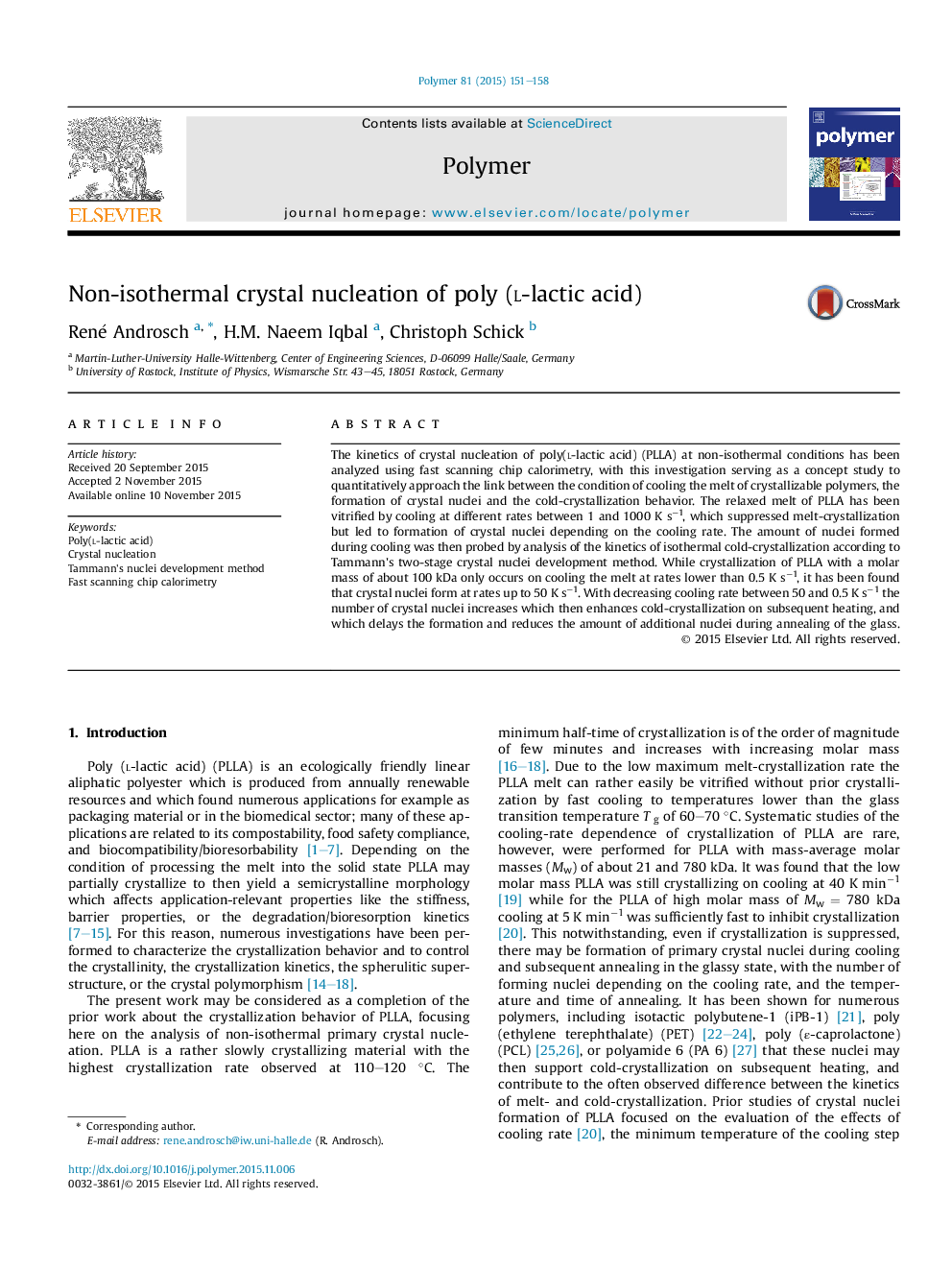| Article ID | Journal | Published Year | Pages | File Type |
|---|---|---|---|---|
| 5179726 | Polymer | 2015 | 8 Pages |
The kinetics of crystal nucleation of poly(l-lactic acid) (PLLA) at non-isothermal conditions has been analyzed using fast scanning chip calorimetry, with this investigation serving as a concept study to quantitatively approach the link between the condition of cooling the melt of crystallizable polymers, the formation of crystal nuclei and the cold-crystallization behavior. The relaxed melt of PLLA has been vitrified by cooling at different rates between 1 and 1000Â KÂ sâ1, which suppressed melt-crystallization but led to formation of crystal nuclei depending on the cooling rate. The amount of nuclei formed during cooling was then probed by analysis of the kinetics of isothermal cold-crystallization according to Tammann's two-stage crystal nuclei development method. While crystallization of PLLA with a molar mass of about 100Â kDa only occurs on cooling the melt at rates lower than 0.5Â KÂ sâ1, it has been found that crystal nuclei form at rates up to 50Â KÂ sâ1. With decreasing cooling rate between 50 and 0.5Â KÂ sâ1 the number of crystal nuclei increases which then enhances cold-crystallization on subsequent heating, and which delays the formation and reduces the amount of additional nuclei during annealing of the glass.
Graphical abstractDownload full-size image
